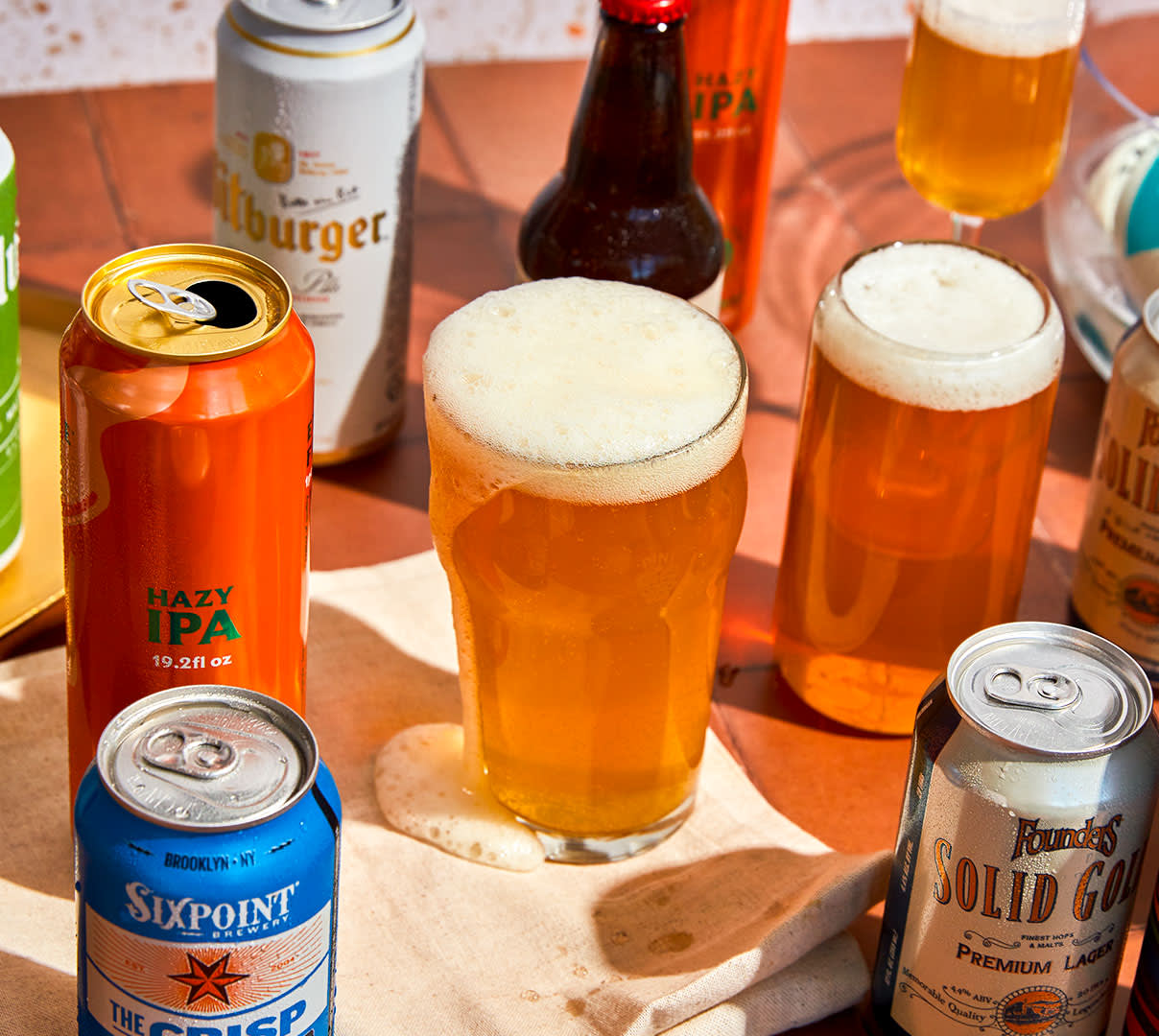If you already operate a brewery, starting a taproom is the logical next step to expand your business. But what is a taproom, and how do you start one?
Brewer’s Association defines a taproom as “a professional brewery that sells 25 percent or more of its beer on-site and does not operate significant food services.”
A taproom doesn’t require a full-blown restaurant, so it can be a fairly simple addition to a pre-existing brewery.
Plus, selling your beer through a taproom makes for a higher profit margin than selling it through a distributor. A typical half barrel of beer goes for $600 in a taproom versus $150 through a distributor. Sounds good, doesn’t it? So pull up a seat and pour yourself a cold one as we discuss the ins and outs of how to start a taproom.
1. Do your research
As with any new endeavor, knowing how to start a taproom requires doing your research. You need to know the facts before making the best plan for your brewery taproom. Think about these options for gathering data:
Know your brand:Gather all of the collateral and info you have on your brand. Think about what has worked for you and what hasn’t. Take note of any taproom ideas that seem like a good fit for your brand specifically.
Poll current customers: Talk to the people who already love you. Ask them what they would like in a taproom and what they wouldn’t. You could reach out via phone call, text, or hop on social media to ask for feedback.
Research locations: Maybe you already have a taproom space or need to hunt for a site. Either way, research the area where you want to make your taproom roots. Find out if there are other taprooms or bars nearby. Understand the demographic of people in the neighborhood.
Set yourself apart from the competition: Once you know your competition in the area, think about ways you can be different. If there’s another bar or taproom focused on beer in the area, how can you approach the business with a different take? What might local customers find appealing that the competition doesn't already have? Maybe you focus on taproom events if others in the area don’t. Or you could offer a more informal vibe if the other local bars are more formal.
2. Make a business plan
A business plan is a map for going where you want to go with your business. Once you know the customer needs in the area you want to open your taproom, you have all of the information you need to make a detailed business plan.
With an existing brewery business, you likely already have a business plan. (If you don’t, it’s OK — just take this opportunity to make one.) If your current business plan already accounts for a taproom, great. If not, you will need to write a business plan for starting a taproom. Either way, make sure you update everything as needed.
The basics of any business plan are:
Executive summary: This is a brief lowdown on your company. Shortly sum up your product and services, mission statement, employee and leadership structure, and the basics of any funding needed.
Business description and structure: Describe what products and services you will offer and how they’ll serve your customer. Decide what type of business license you will need.
Market research and strategy: You can use the info you found through your research for this part of the plan. Lay out what you know about your target customer and the area where you are opening up shop. Talk about your strategy for reaching customers and how you will differ from the competition.
Management and personnel: Outline who will do what. Discuss any hiring that needs to happen and the culture of your team.
Financial documents: This is the nitty-gritty of how you will make the big bucks. Talk about any funding you need and how you will get it. Explain your financial goals for your taproom business and when you plan to reach them.
3. Find a location
If you have room in your current space for a taproom, great. If not, you will need to find a site that’ll work for a taproom. You want to find a convenient location for customers that isn’t overrun with nearby competition.
Other important factors include renovation costs, the type of space and how it fits your brand and vision for your taproom, the space capacity, event space size, and how close it is to your existing brewery business. You likely won’t find the perfect space, but consider what matters most for your taproom and find a space that checks the most boxes for your business needs.
4. Figure out the financials
In your business plan, you should have an outline of the financials, but make sure you know all the details. Think about how you will get funding if you need it, and start working on getting it. Will you make a Kickstarter campaign or apply for a small business loan?
You will need to understand the overhead costs of your taproom — how much it will cost to get your taproom up and running. This includes the cost of any new equipment and renovations.
Once you are open, how much is rent? What will your ongoing expenses be? Also, consider the costs of any new staff you will need to hire.
Make a forecast for your predicted sales. Your first few months may be slower as you build your business and get the word out, so plan on covering some extra business costs. Think about when you think your sales will start covering all business costs.
5. Consider events and programming
There are lots of different ways to host events. They can be a helpful way to bring in more revenue. You can bring in customers who might not have come otherwise and bring back existing customers with taproom events. Consider the different types of events you could offer in your space and try a few that are a good fit for your vibe:
Private events and parties
Trivia nights
Theme nights
DIY events
Book clubs
Game nights
Bring-your-pet day
Whatever else you dream up
And remember to make a calendar for all the events you plan to share with your customers!
6. Make it legal
You don’t want to face fines or shutdown, so make sure you have all your legal ducks in a row before you open. Every city and state has different regulations so check with your local authorities to find out what you may need. Here are some of the common things you may need for your business:
Building permits
Business license
Certificate of occupancy
Health permit
Liquor license
7. Outfit your space
As you dream up your taproom, you are probably building a certain vision for the space. You want to pick furniture and decor that feels like your vibe — whether that’s vintage dive bar, cozy cabin, or something completely different. You may want to make a vision board to have a visual guide as you design your space.
Also consider what technology you want in your space. Think about the best brewery management software, your taproom POS system, and whether you want to use digital menus. How will customers order? Think about digital ordering and pay-at-table options. What kind of tunes will you play, and more importantly, how will you play them? Think about the sound system you want for your taproom.
8. Plan your food program
The beauty of a taproom is you don’t have to plan an extensive food menu like you would need at a brewpub. But when customers start drinking they may get the munchies, and it’s a good idea to have a plan for some sort of food.
You might offer a complimentary snack mix or bring in food trucks on the weekends. Other options include having a light appetizer menu or keeping menus on hand for local takeout options so customers can place an order when they get hungry. Whatever your plan, make sure you communicate with customers so they know how to plan for their food needs.
9. Hire and train staff
Understand what size team you will need and the different types of roles to fill. You will likely need a taproom manager and several servers. Think about other roles you may need to fill the specific needs of your taproom.
Your taproom staff will be the face of the brewery, so you want to make sure they represent the brand well and it’s a good idea for them to know their stuff when it comes to beer. They will also need to be old enough to serve alcohol — typically between 18 and 21 depending on the laws in your state.*
Before you start the hiring process, think about what kind of culture you want to have in your space and build your interviews with that in mind. Is it most important that your staff is friendly, knowledgeable about beer, or something else? Look for a team that fits the bill.
10. Open up shop
Once you have your plan, your space, your team, and all your gear — like your taproom POS system — you can get ready to open. Plan out when you will have your official grand opening and decide if you want to do something special for that day.
Some businesses also find it helpful to have a soft opening. This is a day or time period where you are open but you only invite friends and family to give your team a chance to practice and make sure everything works smoothly.
Now you know how to start a taproom. You’ve got this. Let us know when we can pop in for a visit to your friendly neighborhood taproom.
*Must be 21+ to order alcohol. Drink responsibly. Alcohol available only in select markets on DoorDash.





